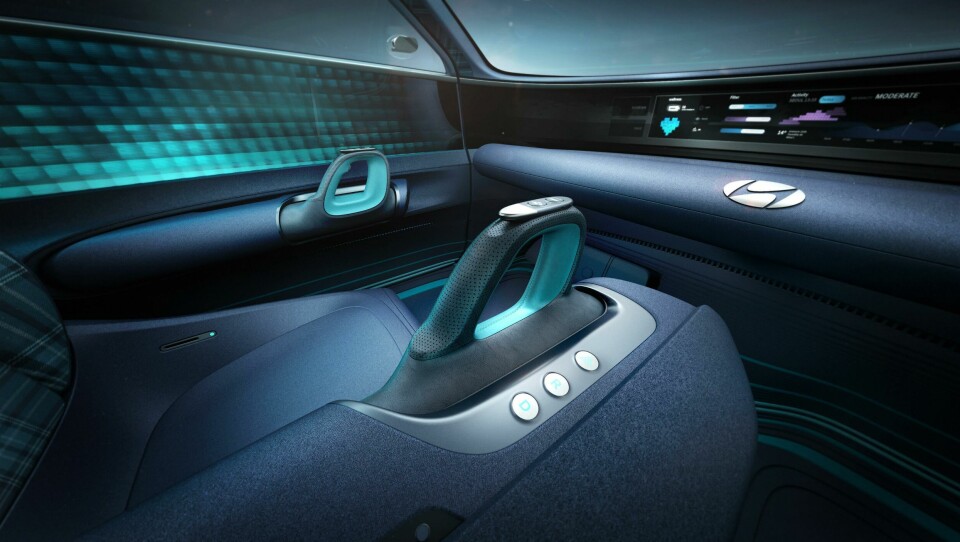
Interior Motives: Hyundai Prophecy
Resolutely not a ‘show business’ car, the Prophecy contrasts analogue and digital worlds to create an original and unique car interior which, according to the design team, will soon be on our streets
The Hyundai Prophecy didn’t get the fanfare it deserved at the 2020 Geneva Motor Show when the coronavirus pandemic forced the famous Swiss event to be cancelled. But even when viewed remotely, its design garnered a favourable response from critics and fans alike. In particular, the Prophecy’s curvaceous shiny black exterior drew favourable comparisons to the classic 1947 UrSaab, the mid-70s Porsche 911(930 Turbo) and also modern-day Teslas, but its finely executed and ultra-modern front and rear lights, wheels and back-lit badging catapulted it beyond retro or derivative accusations. It doesn’t look like any previous car from the South Korean brand either, suggesting that its design team really is trying to break new ground (and is still on a roll).
Hyundai Motor’s chief creative officer, Luc Donckerwolke explains the concept’s importance and name clearly. “Prophecy is not a just a ‘firework’ but something that will have a long-standing influence on future projects,” he says. “It has a Dr Jekyll and Mr Hyde character, the aim being to contrast nature and technology, emotion and practicality and analogue and digital worlds to create that tension.”
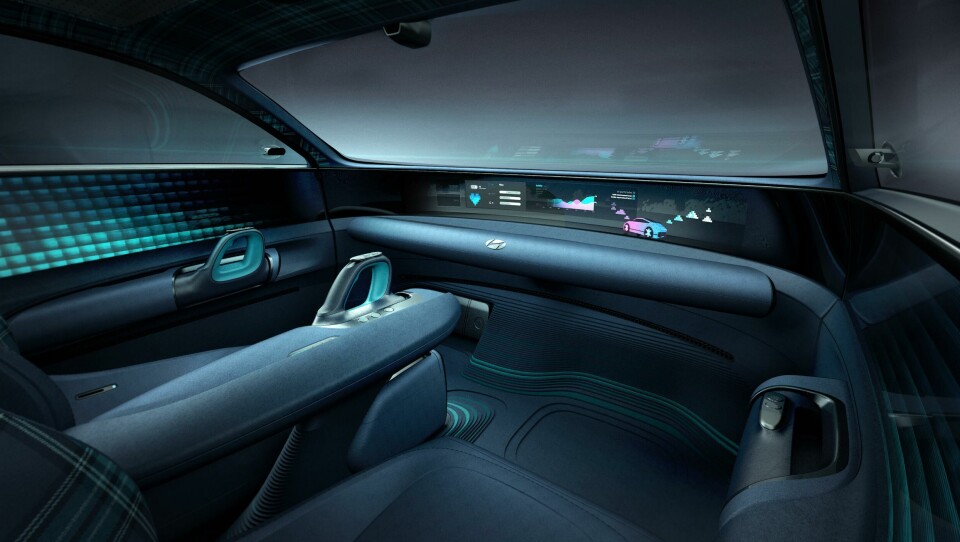
This is true of the interior too, which in the absence of a physical press conference and thorough examination has been overlooked until now. While the Prophecy’s exact exterior dimensions remain undisclosed its size has been described by senior VP and head of Hyundai & Genesis design SangYup as a D-segment sedan – like a current Hyundai Sonata say. However, with its smaller electric powertrain package and the absence of a conventional firewall, dashboard or even steering wheel, he says a much bigger interior space has been created, think next segment up and akin to a Mercedes S-Class.
The most striking feature within the concept’s cabin is its twin joystick controller layout rather than a conventional fixed steering wheel. Joysticks appear in all the early sketches we’ve seen, even where other cabin and seat layouts have varied. The idea is not new to car design and is well-used in gaming and various aeronautical applications – helicopters being an obvious one – but joysticks haven’t been a regular feature within concept car design in this separated fashion for more than a decade, as far as we can remember. The last brand we recall taking the technology as seriously was Honda in a trio of 2011 Tokyo Motor Show concepts – the AC-X, Micro Commuter and EV-STER. The basic science behind Honda’s concepts a decade ago was the forward and back movement of twin-lever steering movement is more natural to human behaviour than a round steering wheel. Honda’s research also found that the human brain has to analyse the operation of a round steering wheel, whereas twin-lever joysticks were considered more intuitive.
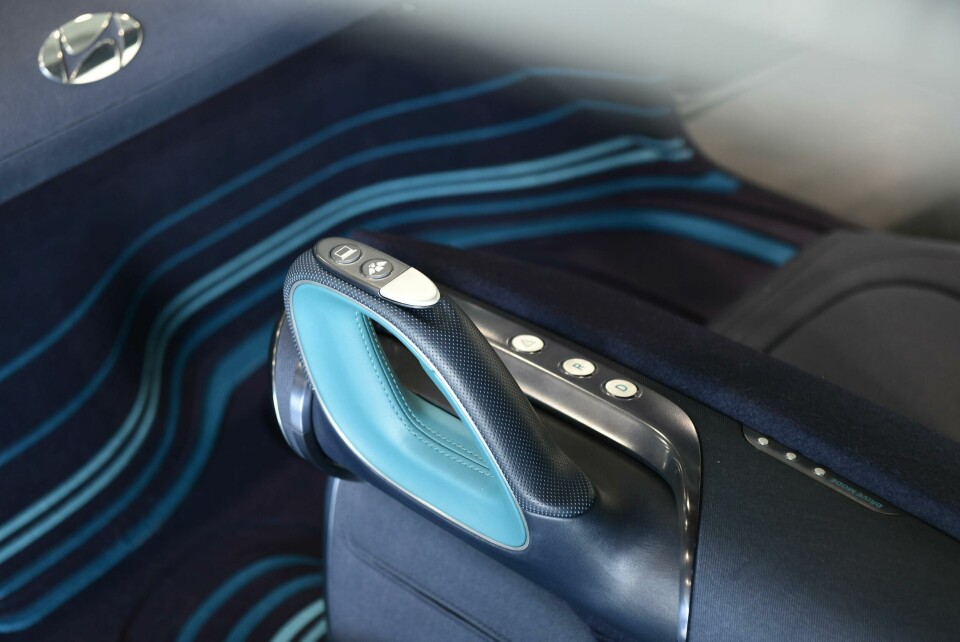
Forward-wind to 2020 and the reason joysticks appealed again to Hyundai’s design team includes the additional factors of control and transition of autonomous cars. As SangYup Lee explains: “We’ve seen some concepts called Autonomous Level 4 that have a steering wheel collapse, drop, move forward and disappear. That does not really make sense to me because it means you must stop the vehicle to get into autonomous driving mode. You cannot control the car when it’s transforming into autonomous mode.” The Prophecy’s joysticks mounted either side of the driver’s seat – one in the door panel and one in the centre armrest – are more stylised enclosed loops than old-school aero-style sticks, but Lee makes clear that Hyundai’s joystick exploration is no flight of fancy. The company has been in close collaboration with Aachen University in Germany and some of the academics there were even part of the Prophecy show car’s development. “Aachen has been studying this joystick idea for a long time,” says Lee, “and our technical department is working with the university at the moment.” Lee’s design colleague Donckerwolke reckons that 90% of the car’s commands can be executed through the two joysticks and its associated mounted buttons, although he does concede there is some ‘doubling up’ on certain functions – there are still physical foot pedals on the Prophecy for instance.
Aside from swapping a steering wheel for joysticks, the other dramatic feature at the front of the Prophecy concept is its rotatable instrument panel and full-width curved screen set just below the windscreen cowl. In ‘relax’ mode – when the car is autonomously doing the driving – the curved screen is fully exposed and provides more entertainment-related information. But when in (human) ‘driving’ mode the seemingly floating, oval-shaped instrument panel in front pivots upward to reveal another screen previously hidden out of sight on its underside and now facing the driver and featuring more limited driver-relevant information like speed.
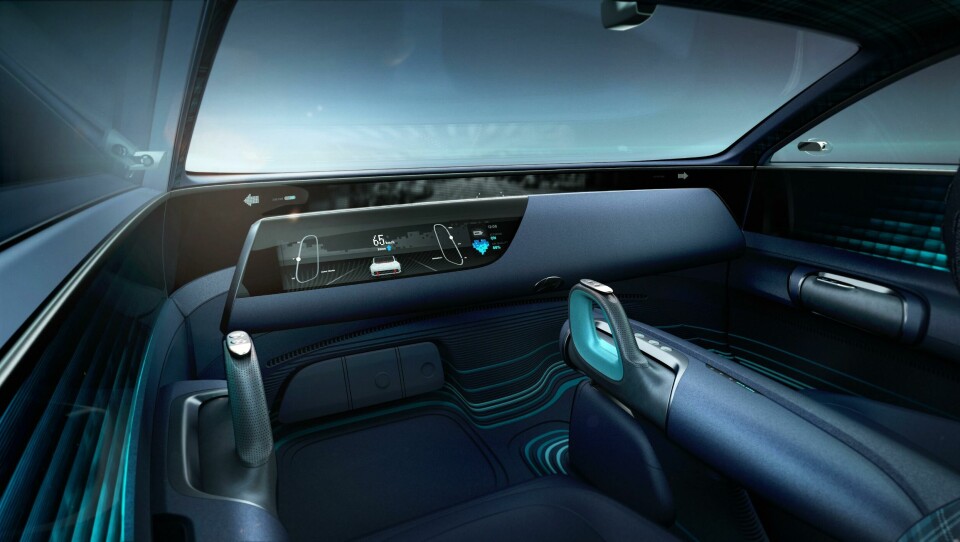
Relaxing in the Prophecy seems like the dominant ambience of its interior concept overall though and the physical design of some of the other elements within the cabin back up that feeling. Look below the rotating IP and there are undulating lines on the flat floor in various shades of greenish blue set against the darker overall interior body colour. This topographic layering says Donckerwolke “was inspired by one of the tropical wonders of the world, the Korean island of Jeju. The island is volcanic, so it has dark ash shores surrounded by blue waves.” Whether you believe that line or not, it’s still a calming and organic-looking design motif and in keeping with the car’s zero-emission ambitions.
To further that end, the tartan fabric featured on the seats and ceiling is made of sustainably-sourced natural wool and the ceiling dome has double glazing with a clean air purifier incorporated within its structure which, says Donckerwolke, creates a “thermic cushion” to put less strain on the the air-conditioning system and the battery which powers it. Alongside this tartan, the repeated pixel-like lights in the door panels – which echo the smart exterior lights and are graduated in intensity, horizontally from front to back – create extra ambient interest.
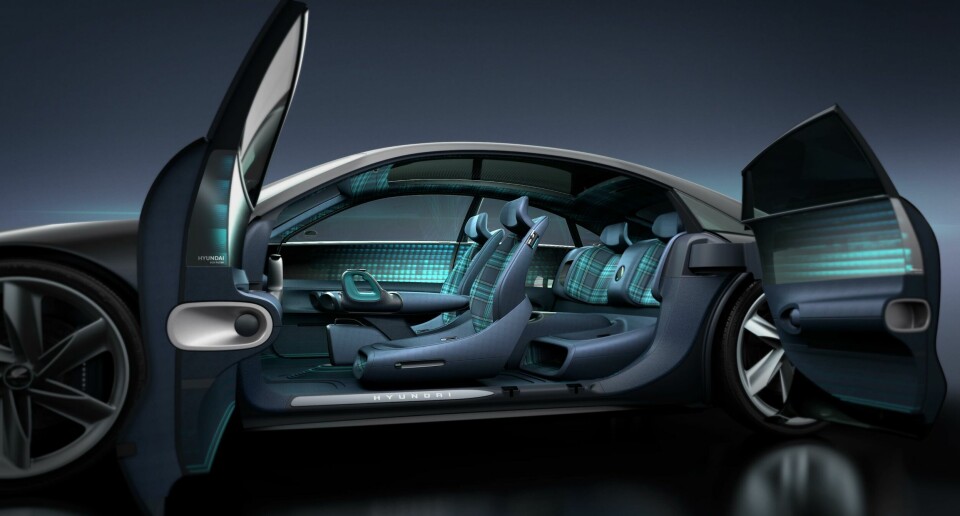
All combined, the Prophecy’s interior feels like a very unusual and original space, distinct from other Hyundai concepts – recent and historic – and from rivals’ concepts too. Hyundai Motor Company has already said it is working on a mid-sized, full-electric sports sedan for its N brand and announced a strategic investment in Croatian EV supercar and component manufacturer Rimac in April 2020, and the Prophecy concept could provide clues to that production version. Donckerwolke would appear to think so and isn’t being coy about its chances, as he concludes: “We don’t do show cars for ‘show-business’ at Hyundai. This is a prophecy of the future you will see on the streets soon.”



